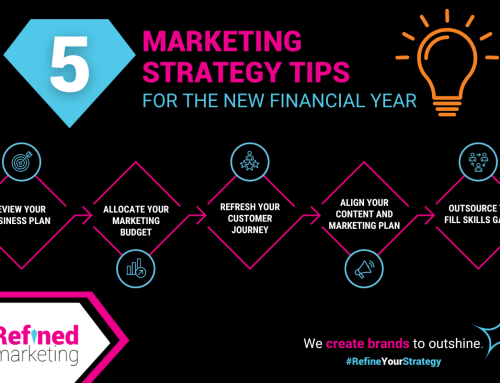Creating an Effective Marketing Plan – Minus the Headaches

As a marketing manager, you’re probably no stranger to the challenges of crafting a comprehensive and effective marketing plan. From securing budget allocations to gaining team buy-in and ensuring a consistent flow of initiatives, the journey towards a successful marketing strategy has its obstacles.
However, armed with the right approach and strategies, you can navigate these challenges with confidence and create a plan that drives results.
In this guide, we’ll delve into the common pain points faced by marketing managers and provide actionable insights to overcome them, along with tips on collaborating effectively with agencies to maximise your plan’s impact.
Understanding common pain points
1. Lack of budget
Securing adequate funding for marketing initiatives is often a hurdle faced by marketing managers. Limited budgets can constrain creativity and restrict the scope of campaigns.
2. Team buy-in
Getting your team aligned and committed to the marketing plan’s objectives can be challenging. Without buy-in from all stakeholders, execution may stall.
3. Consistent flow
Maintaining a steady stream of initiatives throughout the year can be daunting. Fluctuations in workload and unexpected hurdles can disrupt the planned trajectory.
4. Long-term vision vs. short-term goals
Balancing long-term strategic objectives with short-term performance goals requires careful planning and foresight.
5. Accountability and measurement
Establishing clear metrics for success and accountability mechanisms ensures that efforts are aligned with overarching business objectives.
How to create a marketing plan
A carefully considered marketing plan not only focusses on what you put in front of consumers and clients, but also how you onboard new team members, and how you promote team buy-in.
A well-executed marketing plan that aligns with your business objectives as well as your brand story can help to achieve business growth.
1. Define your target audience
If you don’t know who your ideal consumer is, how can you sell your products or services to them? Taking the time to consider who your target audience is allows you to focus your marketing efforts on the right people.
But it’s not enough to just know who your target audience is – what do they want, and what do they need? Identifying your consumers’ pain points can help you tailor your marketing messages to resonate with your audience.
The first step in creating an effective marketing plan is identifying your target audience. Who are your ideal customers, and what are their needs and wants? Knowing this information will help tailor your marketing messages to resonate with your audience.
2. Set measurable goals
Once you have identified your target audience and their needs, the next step is to set your marketing goals. What do you want to achieve with your marketing efforts? Do you want to increase website traffic, generate leads, or boost sales?
Setting clear and measurable goals will help you track your progress and adjust your strategy.
3. Analyse your competitors
It’s important to know what faces your consumers when they’re looking for a solution. Which brands offer products or services like your own? Which companies share the same niche as your brand?
Analysing your competitors can help you identify gaps in the market and find ways to differentiate your brand. Consider their marketing strategies, messaging, and branding to see what they’re doing well and where they need to catch up.
This information can help you create a unique value proposition for your business, helping it stand out from the crowd.
4. Develop your marketing strategy
Marketing strategies are essential for keeping your business on track with both your marketing efforts, and marketing budget.
In your marketing strategy, include a content calendar where your team can collaborate. Choose the right marketing channels for your business – if TikTok doesn’t align with your target audience, don’t feel the need to focus your efforts there.
Developing your messaging is key for your marketing strategy and overall marketing plan – how do you want your brand to come across to potential customers? Here, it’s important to collaborate with your sales team – they need to understand what exactly they’re selling, and why.
5. Keep your brand in mind
In the digital age, consumers have more options than ever when it comes to choosing a product or service. Research has found that 81% of consumers feel like they need to be able to trust a brand to buy from them.
This is where your brand values, story and messaging all come into play. Build trust with your consumers by showcasing your values, credibility and unique offering.
6. Manage your time, projects and budget
Adopting a solution-oriented approach where collaboration is key helps to keep everyone on the same page, no matter their seniority in the business. Divide the annual marketing plan into manageable quarterly chunks. This approach allows for flexibility and adaptability while ensuring a consistent focus on goals.
Secure stakeholder buy-in by engaging key stakeholders early in the planning process and include their input. Foster a collaborative environment where ideas are valued, and concerns are addressed.
A great way to keep your projects in line while allowing for collaboration is to use a project management tool. The tool we use at Refined is Asana, which helps us to track both client projects and manage our own marketing efforts.
Time tracking can help you to visualise the workload you have and understand what tasks take up the most time. With this information you can look to automate certain tasks, create templates or enlist the help of an outsourced marketing agency to support with areas your team are not as comfortable with.
7. Don’t neglect team onboarding and buy-in
Your team are your greatest asset in business, and the people who will help your brand shine. If your team don’t know your brand values and story, how can they communicate them to the client?
But this goes beyond an initial onboarding presentation on day one, your team should be ambassadors for your brand and proud of the work they are doing.
8. Utilise agency collaboration
To maximise agency collaboration, choosing the right partner is a necessity. Select an agency that aligns with your brand values, goals, and objectives. Look for expertise in your industry and a track record of delivering results.
Establishing clear communication channels helps make agency collaboration a smoother process. Foster open and transparent communication with your agency partners, where roles, responsibilities, and expectations are defined clearly to avoid misunderstandings.
Cultivate a partnership mindset with your outsourced marketing agency. Treat your agency as an extension of your team rather than a separate entity. This will help you to foster a collaborative and mutually beneficial relationship built on trust, respect, and shared goals.
9. Follow through, measure and adjust
It’s all well and good having a marketing plan, but you need to implement it if you want to see results.
It’s essential to measure the success of your marketing plan and adjust your strategy accordingly. Monitor your website traffic, social media engagement, and sales to see what’s working and what’s not.
Use this data to make informed decisions about your marketing strategy moving forward, remembering it’s a continuous process.
By addressing common pain points, adopting a solution-oriented approach, and maximising collaboration with agencies, marketing managers can write a great marketing plan that drives results and achieves business objectives.
If you need help creating a shining marketing strategy, get in touch with our team at letstalk@refinedmarketing.co.uk






Leave a Reply